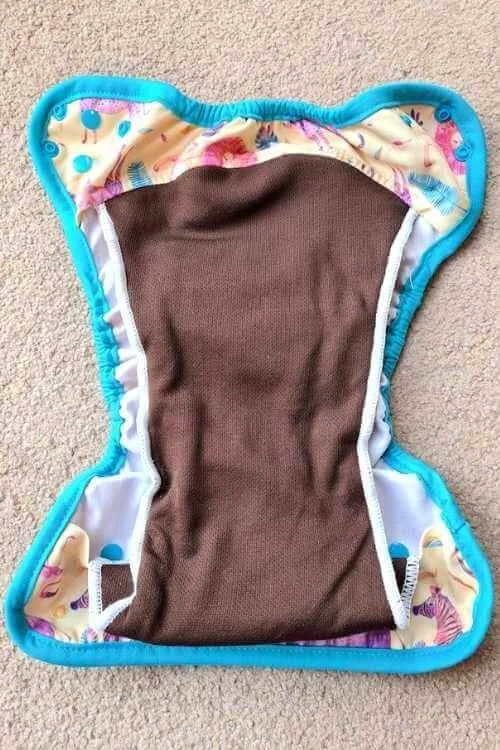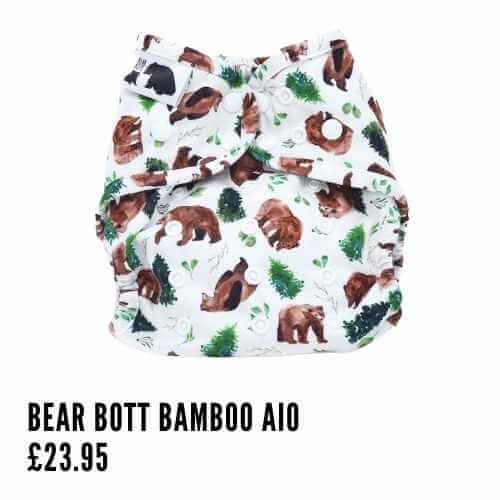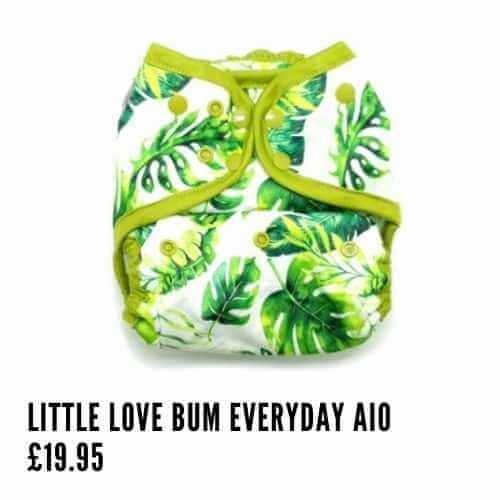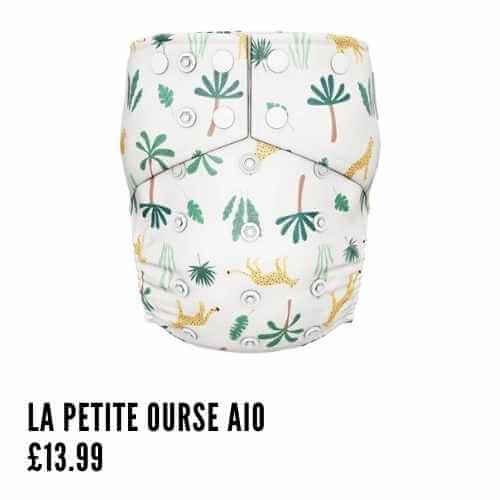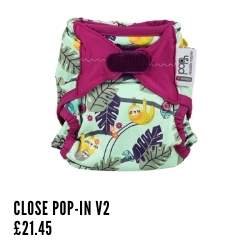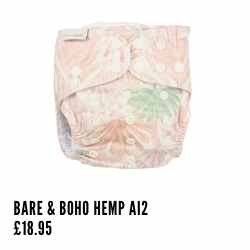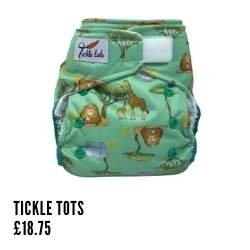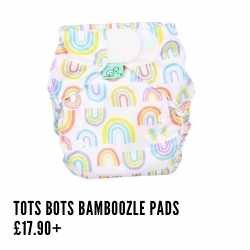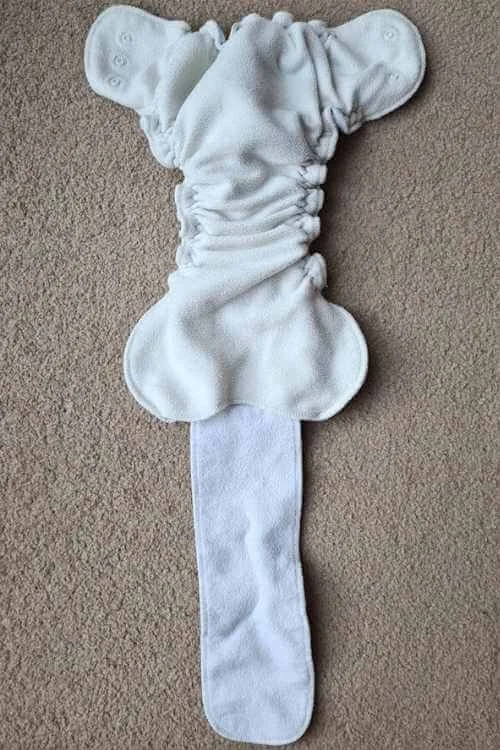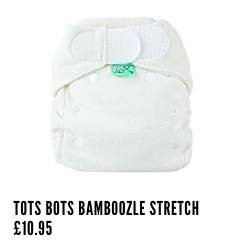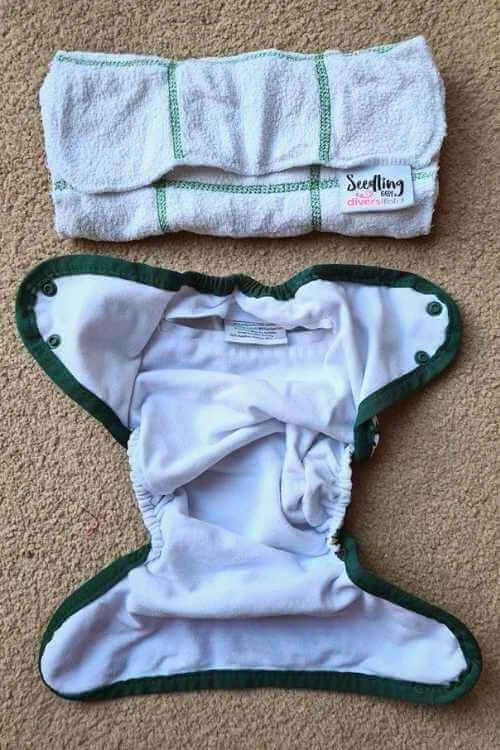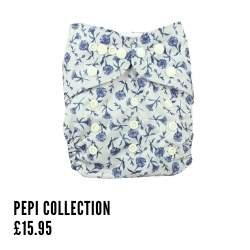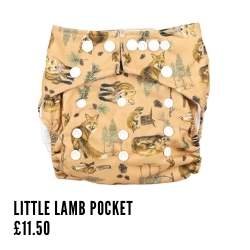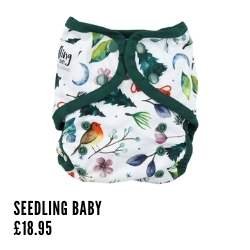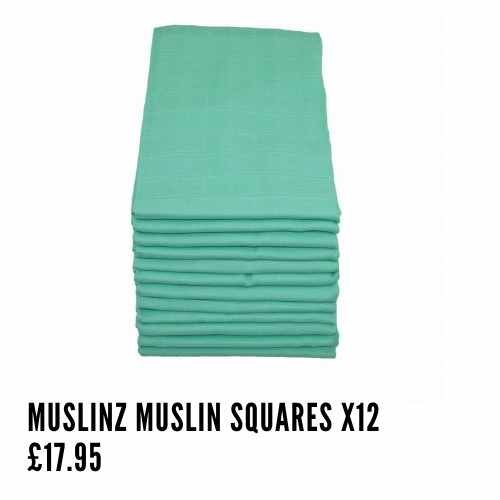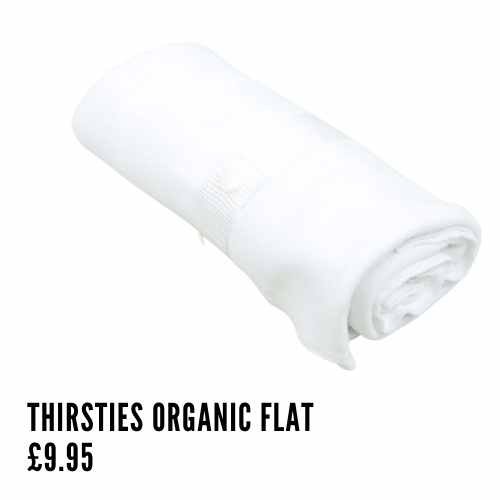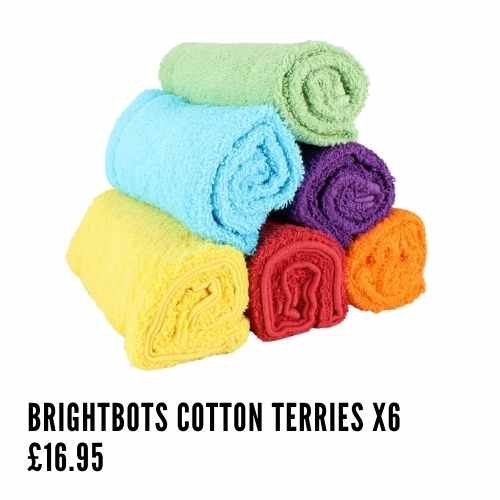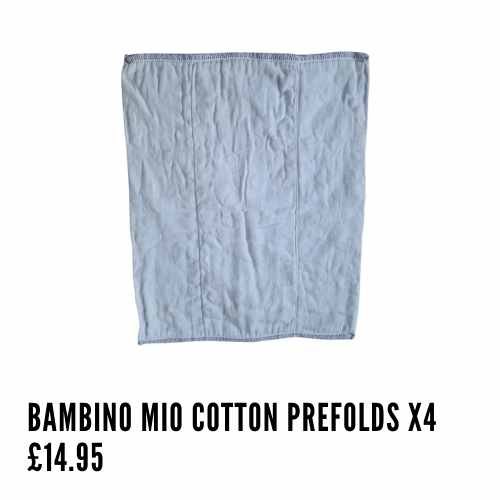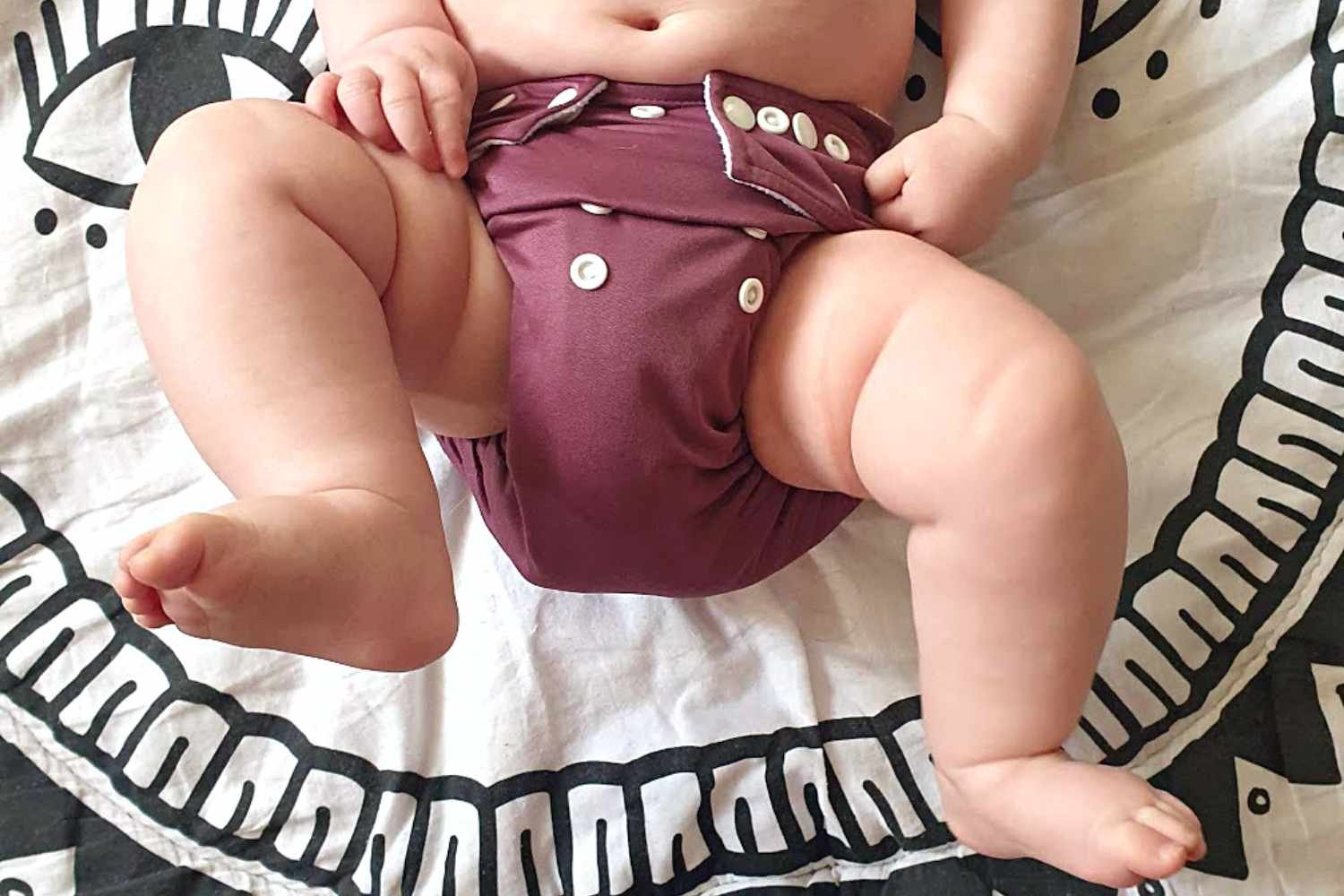Which Type of Cloth Nappy Should You Choose?
This post contains affiliate links
Confused by the many types of cloth nappies?
You’re not alone!
It feels like a lot to remember, but you don't have to learn the fancy lingo.
The easiest thing to do is read the pros and cons of each style (keeping in mind how you’re going to dry them) and then test out a few.
It’s hard to know which type you’ll get on with best until you test them.
The aim of this post is to help you decide which styles of cloth nappy you’d like to try.
COMING UP
The basics
All in one
All in two
Fitted nappies
Pocket nappies
Flats
Summary
Disclosure - I am affiliated with The Nappy Gurus, an online shop for cloth nappies and eco-living products. This means I get a small commission (at no extra cost to you) if you decide to shop with them through my links. I have not been paid by any nappy brands and bought all my own products.
If you’d like to get 10% off at The Nappy Gurus, you can use my code: SUSTAINABLYLAZY
the basics
Cloth nappies are made up of two essential parts and two optional parts.
The two essential parts are:
A waterproof outer layer (often called a wrap or cover)
A fabric inner layer which is the nappy (sometimes called an insert)
The two optional parts are:
A booster - a piece of absorbent fabric that helps the nappy hold more urine.
A stay dry liner - this sits on the top of the nappy to make removing poo easier and to keep your baby’s bum dry. It’s usually made from fleece or polyester. Some types of nappy have it built-in.
The 5 types of cloth nappy are basically just these 4 parts being attached in different ways.
All in One
An all in one nappy (AIO) is the most like a disposable because the waterproof layer and the cloth part are permanently attached. The outside is a waterproof cover and the absorbent fabrics are attached to it.
Because it’s one piece, an all in one diaper requires minimal preparation and can be more convenient than other styles, particularly when you’re out and about.
Some people don’t get on with this style of nappy, particularly those with heavy wetting babies. This is because lots of popular brands (the ones you’ll find in supermarkets) make their AIOs out of microfibre or a bamboo and polyester blend. For heavy wetters, hemp nappies are a much better choice.
To speed up the slow drying times, brands have got quite creative and there is quite a lot of variation. Some brands have only attached the absorbent part of the nappy at each end and others have sewn extra boosters in that hang out when they are dry.
I wouldn’t buy a whole stash of this type of nappies (especially the cheaper or mainstream brands, like Totbots or Bambino Mio) until you’ve tried some out first.
There is quite a lot of variation in AIO design and material, take a look at these:
Little Love Bum Everyday has the nappy attached at both ends and a space underneath to speed up drying (or for an extra booster). The extra material can be folded at the front or back for extra protection. They have a synthetic and a natural option available.
Thirsties staydry natural AIO has two boosters (or soakers) attached at one end to speed up drying time. They are made from organic cotton and absorbent hemp. This version has fleece against baby’s bum, but a natural option is available too. If you need a fast-drying nappy, Thirsties AIO also comes in microfibre.
La Petite Ourse AIO is made from polyester and bamboo rayon which is better for those on a budget. The bamboo blend booster can be kept on for convenience or removed if you don’t need it. There is a pocket at the back if you need more absorbency.
Pros:
They are slim under clothing
They are convenient because they require less preparation
They are quick to change
Easy for family members and childcare to use
Cons:
The most absorbent ones are expensive
When made from hemp and bamboo they dry slowly
Microfibre AIOs have less containment and will likely need boosting
More likely to experience leaks with synthetic materials
Popular all-in-one nappies in the UK:
All in two
An all in two nappy (AI2) is made of two separate parts - a waterproof wrap and an attachable insert that poppers in.
You can reuse the wrap multiple times by replacing the insert during a nappy change, as long as it hasn’t been soiled.
This is less hassle if you have two wraps on the go at the same time - one on your baby and one ready to go for the next change. This way, you can put a clean nappy straight on your baby and replace the wet insert with a clean once your babe is all sorted.
Most brands have designed their all in two nappy inserts to go with their waterproof cover. I have two styles at home and I can’t mix and match them because the poppers aren’t in the right place (which is a bit annoying).
All in two is a popular style of reusable nappy because it works out cheaper and dries quicker, however, you have to be a little bit organised to see the benefits.
It is also worth remembering that newborns tend to do lots of small poos so you may be changing the whole nappy most times. My first newborn did about 3 or 4 poos a day so AI2s were ok, but my second baby did about 10 tiny poos a day so they had to be changed every time.
Pros:
Cost-effective when buying in bulk as you need less wraps
Dries faster than some other types
Good for long term use because if one part wears out, you only have to replace one part
Cons:
Requires more organisation skills
Doesn’t work as well if your newborn poos each nappy change
Slower nappy changes due to changing the insert each time
More complicated for family and childcare
Popular all in two nappies:
Fitted nappies
Fitted nappies are a two-part system. The absorbent part is the shape of a nappy and fastens around the front with either aplix (Velcro) or poppers. It is not waterproof so needs a separate cover. You can browse wraps here.
This style of nappy is two layers because both parts have their own fastening. You can generally mix and match brands with this type of nappy, although, there are some that require slightly larger wraps than others.
There are also pull up options for waterproof covers that work with every fitted nappy. The natural option is Wool wraps, like Disana (which needs lanolising), and the vegan option is Petit Lulu plastic wraps which have soft fleece leg holes. I personally prefer the pull-up options although they are extremely bulky.
Fitted nappies are incredibly absorbent and mainly used for nighttime, or for extremely heavy wetters in the day. They are typically made from plant-derived materials so are the slowest at drying.
Ella’s House Bumhuggers are made out of hemp, cotton and are fleece lined against baby’s skin. There is an attached booster that sits inside a pocket at the back. Pulling it out speeds up drying time and you don’t have to search around for the matching booster after. The pocket is quite small and the nappy has popper fastening.
Little Lambs bamboo nappies have two sizes and is more suited to shorter babies. They are a budget nappy that uses aplix to close. Little Lambs also create wraps for their fitted nappies. These were probably my least favourite but my partner liked them.
Pros
Very absorbent and rarely leak
Slightly cheaper than other styles
Excellent containment against “poonamis”
Ideal for nighttime
Cons
Very slow drying
Very bulky - you will need to get trousers cut for cloth and vest extenders
Feels very wet in the morning
Sizing is different for each brand (always check weight before buying)
Popular fitted nappies:
Pocket Nappy
A pocket nappy consists of a fleece-lined waterproof outer shell and between one and three nappy inserts.
The inside of the waterproof part is covered with a soft material, usually fleece, because it sits next to your baby’s skin. This means it can only be used once. The wrap has a hole at the back where you can slot the inserts inside to turn it into one piece.
Once the nappy has been used, the inserts have to be removed before putting them in the nappy bucket.
Most people prefer to “stuff” their pocket nappies all at once before a change so they are ready to go. I like to sit and do it in the evening while I’m watching the T.V.
Little Lambs one size pocket nappies are budget-friendly and have soft elastics on the legs. They come with two slim bamboo boosters, but I find I need a third booster as my baby is a heavy wetter (bamboo works fine, but I also have their hemp ones too). I prefer Little Lamb to other pocket nappies because they are incredibly slim, even with 3 boosters.
Instead of typical inserts, Seedling Baby use a prefold (a bamboo-cotton square that is folded three times to make an insert shape), plus a microfibre booster that can be placed inside the prefold for quicker absorbency.
Pros:
One of the cheapest types of nappy
Easy to boost if you need more absorbency
Quick to change if they are pre-stuffed
Cons:
They are more likely to leak
Some pocket nappies are bulky with two inserts
Requires time and energy to stuff them
Popular pocket nappies:
Flats
Flats is an umbrella term for traditional cloth nappies that need folding and pinning. It includes terry squares, muslin squares and prefolds which all need a waterproof wrap and a nappy nippa to hold them in place. A nappy nippa is the modern equivalent of a safety pin and is much safer to use.
There are lots of different ways you can fold terry nappies and you’ll find simple tutorials on YouTube. Popular folds include the bat fold, the jo fold and the kite fold.
It sounds complicated, but they are a popular method of cloth nappying newborn babies who don’t fit into birth-to-potty nappies yet. This is because they are significantly cheaper than buying a whole stash of newborn sized cloth nappies.
A prefold is a rectangular piece of fabric that has been sewn into three parts - the centre part being more absorbent. Basically, they are pre-folded flat nappies.
A terry nappy using the concorde fold on my older baby and held into place with a red nappy nippa.
A muslin square folded on my newborn baby and held in place with a green nappy nippa. I used the “neat fold” from birth because my babies were premature with dinky legs.
A Bambino Mio newborn prefold
Pros
They are the cheapest type of cloth nappy
They dry fast
Simple to wash
You can change folds as your baby grows to accommodate their changing shape
Prefolds are the simplest as they don’t require folding
Cons
Complicated - you have to memorise folds for muslins and terries
They are harder to get on older babies once they become wriggly
Not suitable for childcare or most family members
Ideally, you want to fold them all in advance
They are bulky, especially on smaller babies
Not all waterproof covers work well with them
Popular flat nappies:
Summary
All in one: the waterproof layer and the cloth layer are permanently attached.
All in two: the nappy inserts popper into the waterproof wrap.
Fitted nappy: the absorbent part is the shape of a nappy and uses aplix or popppers. It requires a separate waterproof wrap.
Pocket nappy: the nappy inserts slot inside a pocket in the fleece-lined waterproof wrap.
Flats: A square piece of fabric that is folded and held in place by a nappy nippa. It requires a separate waterproof wrap.
Hopefully, you have a better understanding of the different types of cloth nappies available now. Do you have an idea of which style you’d like to try?
If you’ve got any questions, feel free to pop them in the comments below or send me a DM on Instagram.
READ NEXT:




